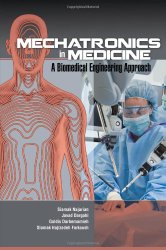 Mechatronics in Medicine A Biomedical Engineering Approach
Mechatronics in Medicine A Biomedical Engineering Approachby Siamak Najarian, Javad Dargahi, Goldis Darbemamieh, Siamak Hajizadeh Farkoush
Publisher: McGraw-Hill Professional
ISBN: 0071768963
Mechatronics in Medicine: A Biomedical Engineering Approach describes novel solutions for utilizing mechatronics to design innovative, accurate, and intelligent medical devices and optimize conventional medical instruments.
After an introduction to mechatronics, the book addresses sensing technologies, actuators and feedback sensors, mechanisms and mechanical devices, and processing and control systems. Artificial intelligence, expert systems, and medical imaging are also covered. This pioneering guide concludes by discussing applications of mechatronics in medicine and biomedical engineering and presenting seven real-world medical case studies.
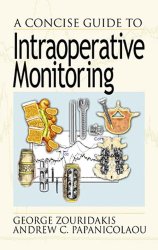 A Concise Guide to Intraoperative Monitoring
A Concise Guide to Intraoperative Monitoringby George Zouridakis, Andrew C. Papanicolaou
Publisher: Lewis Publishers, Inc.
ISBN: 0849308860
Univ. of Texas, Houston Medical School. Discusses procedures, protocols used in hospital settings, examples of typical recording, possible problems, and recommended solutions. Summarizes the effects of various drugs on electrophysiological recordings. Ideal for those preparing for board exams. DNLM: Monitoring, Intraoperative--methods.
A Concise Guide to Intraoperative Monitoring begins by discussing the basic principles underlying the generation of bioelectrical signals. It then describes the electronic equipment and the various electrophysiological procedures involved in IOM. From this foundation, the book gradually advances to more specific topics, such as surgical procedures, neuronal structures at risk, the optimum combinations of tests to administer, and the proper interpretation of test results.
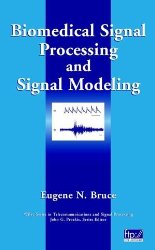 Biomedical Signal Processing and Signal Modeling
Biomedical Signal Processing and Signal Modelingby Eugene N. Bruce
Publisher: John Wiley & Sons
ISBN: 0471345407
A biomedical engineering perspective on the theory, methods, and applications of signal processing This book provides a unique framework for understanding signal processing of biomedical signals and what it tells us about signal sources and their behavior in response to perturbation. Using a modeling-based approach, the author shows how to perform signal processing by developing and manipulating a model of the signal source, providing a logical, coherent basis for recognizing signal types and for tackling the special challenges posed by biomedical signals-including the effects of noise on the signal, changes in basic properties, or the fact that these signals contain large stochastic components and may even be fractal or chaotic.
Each chapter begins with a detailed biomedical example, illustrating the methods under discussion and highlighting the interconnection between the theoretical concepts and applications...
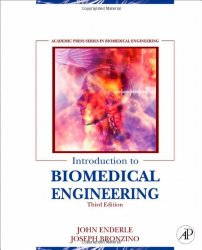 Introduction to Biomedical Engineering
Introduction to Biomedical Engineeringby John D. Enderle, Susan M. Blanchard
Publisher: Academic Press
ISBN: 0123749794
Introduction to Biomedical Engineering is a comprehensive survey text for biomedical engineering courses. It is the most widely adopted text across the BME course spectrum, valued by instructors and students alike for its authority, clarity and encyclopedic coverage in a single volume.
Intended primarily for engineering students who have completed differential equations and basic courses in statics, dynamics, and linear circuits, and for students in the biological sciences who have the appropriate math background. Introduces and overviews the field, giving historical perspective and focusing on major fields of activity. Can be used with a one- or two-semester course or a three- quarter sequence. Editors Enderle (U. of Connecticut) and Susan Blanchard (North Carolina State University), and Joseph Bronzino (Trinity College) are all former presidents of the IEEE Engineering in Medicine and Biology society and are respected educators in the field.
 Introduction to Biomedical Equipment Technology
Introduction to Biomedical Equipment Technologyby Joseph J. Carr, John M. Brown
Publisher: Prentice Hall
ISBN: 0130104922
Introduction to Biomedical Equipment Technology is recognized as the premier book used to train biomedical equipment professionals, and serves as an excellent reference for these professionals in the field. It is also a valuable reference work for engineers and technologists who design biomedical equipment.
Since the publication of Carr and Brown's biomedical equipment text more than ten years ago, it has become the industry standard. Now, this completely revised second edition promises to set the pace for modern biomedical equipment technology.
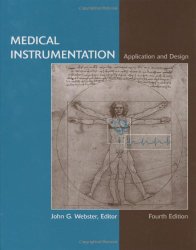 Medical Instrumentation: Application and Design
Medical Instrumentation: Application and Designby John G. Webster
Publisher: John Wiley & Sons
ISBN: 0471676004
This well-established text describes the principles, applications and design of the medical instrumentation most commonly used in hospitals. Because equipment changes with time, the authors stress fundamental principles of operation and general types of equipment. They avoid detailed descriptions and photographs of specific models.
Design principles are emphasized so that a scientist with only some background in electronics can gain enough information to design instruments that may not be commercially available. Since biomedical engineering is an interdisciplinary field, the authors have provided varied healthcare industry applications for each type of instrument.
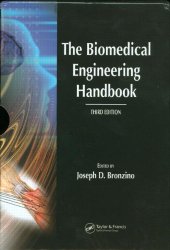 The Biomedical Engineering Handbook
The Biomedical Engineering Handbookby Joseph D. Bronzino
Publisher: CRC Press
ISBN: 0849321247
The first handbook ever written for the biomedical engineering field, this text contains comprehensive information on every aspect of biomedical engineering. It reflects the current perception of the field as one that encompasses emerging and expanding disciplines of investigation and application. It includes a complete review of the major physiological systems and accepted practices.
Incorporating new developments, technologies, and disciplines, The Biomedical Engineering Handbook, Third Edition remains the most comprehensive central core of knowledge available to the field.

